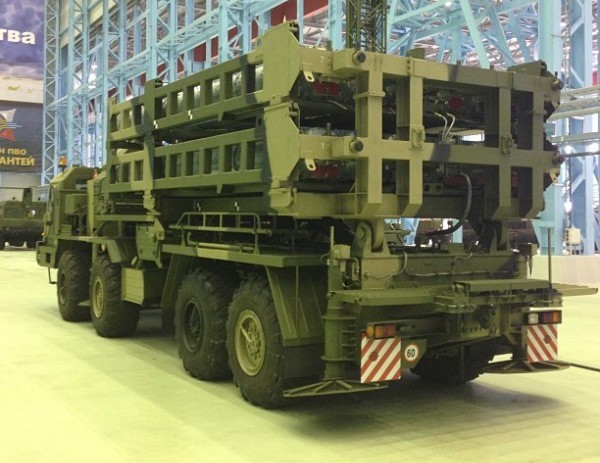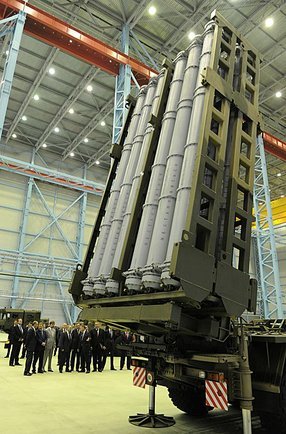Damien
Ultra-Poster
Keine Angst vor Nachbau: Russland bietet China neuen Kampfjet Su-35 an

Russland hat China sein modernisiertes Jagdflugzeug Su-35 angeboten. Beide Staaten führen bereits technische Verhandlungen, wie Alexander Michejew, Vizechef des russischen Waffenexporteurs Rosoboronexport, am Montag mitteilte.
Ein Regierungsabkommen sei bereits unterzeichnet worden, technische Beratungen würden geführt, sagte Michejew am Rande der Luftfahrtmesse in Le Bourget bei Paris. Russland habe keine Angst davor, dass China den Su-35 ohne Lizenz nachbaut. „Zwischen Russland und China gilt ein Abkommen über den Schutz der Urheberrechte. Wir sehen keine Probleme mit einem Kopieren der Su-35 auf uns zukommen.“ Zuvor hatte es geheißen, dass ein Liefervertrag mit China noch in diesem Jahr unterzeichnet werden könnte.
Der Mehrzweckjäger Su-35 gehört zur Generation 4++, besitzt jedoch neue Bordelektronik, ein moderneres Radar mit größerer Reichweite, neue Waffen sowie Triebwerke mit einer höheren Schubleistung und Schubvektorsteuerung. Dank einer neuartigen Avionik und anderen Ausrüstungen der 5. Generation hat die Maschine in ihrer Klasse nicht ihresgleichen. Der Kampfjet kann 30 Luftziele aus einer Entfernung von über 80 Kilometern gleichzeitig erfassen und acht von ihnen angreifen.
Mit einer Kampflast von bis zu acht Tonnen kann die Maschine auf 2400 km/h beschleunigen. Die Gipfelhöhe liegt bei 18 000 Metern. Zum Vergleich: Die Höchstgeschwindigkeit des US-Kampfjets F-35 beträgt bei vergleichbarer Gipfelhöhe nur 1900 km/h.

© RIA Novosti.
Kampfjet Su-35: Technische Daten
Keine Angst vor Nachbau: Russland bietet China neuen Kampfjet Su-35 an | Sicherheit und Militär | RIA Novosti
- - - Aktualisiert - - -
http://youtu.be/qQmzP748oXU

Russland hat China sein modernisiertes Jagdflugzeug Su-35 angeboten. Beide Staaten führen bereits technische Verhandlungen, wie Alexander Michejew, Vizechef des russischen Waffenexporteurs Rosoboronexport, am Montag mitteilte.
Ein Regierungsabkommen sei bereits unterzeichnet worden, technische Beratungen würden geführt, sagte Michejew am Rande der Luftfahrtmesse in Le Bourget bei Paris. Russland habe keine Angst davor, dass China den Su-35 ohne Lizenz nachbaut. „Zwischen Russland und China gilt ein Abkommen über den Schutz der Urheberrechte. Wir sehen keine Probleme mit einem Kopieren der Su-35 auf uns zukommen.“ Zuvor hatte es geheißen, dass ein Liefervertrag mit China noch in diesem Jahr unterzeichnet werden könnte.
Der Mehrzweckjäger Su-35 gehört zur Generation 4++, besitzt jedoch neue Bordelektronik, ein moderneres Radar mit größerer Reichweite, neue Waffen sowie Triebwerke mit einer höheren Schubleistung und Schubvektorsteuerung. Dank einer neuartigen Avionik und anderen Ausrüstungen der 5. Generation hat die Maschine in ihrer Klasse nicht ihresgleichen. Der Kampfjet kann 30 Luftziele aus einer Entfernung von über 80 Kilometern gleichzeitig erfassen und acht von ihnen angreifen.
Mit einer Kampflast von bis zu acht Tonnen kann die Maschine auf 2400 km/h beschleunigen. Die Gipfelhöhe liegt bei 18 000 Metern. Zum Vergleich: Die Höchstgeschwindigkeit des US-Kampfjets F-35 beträgt bei vergleichbarer Gipfelhöhe nur 1900 km/h.

© RIA Novosti.
Kampfjet Su-35: Technische Daten
Keine Angst vor Nachbau: Russland bietet China neuen Kampfjet Su-35 an | Sicherheit und Militär | RIA Novosti
- - - Aktualisiert - - -
http://youtu.be/qQmzP748oXU










